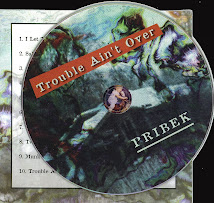Egypt's Supreme Council of Antiquities proves one thing: "A Poor Man's a Poor Man Wherever You Go," (Rule of Seven, Pribek)
Retrieved by Pat Darnell
By DIAA HADID, Associated Press Writer – Mon Apr 12, 6:25 pm ET
 "Afifi said it was still unclear who the woman was but said it was most likely she was a wealthy and influential member of her society, judging by the effort taken on the sarcophagus.
"Afifi said it was still unclear who the woman was but said it was most likely she was a wealthy and influential member of her society, judging by the effort taken on the sarcophagus.Mummies of people of diminutive stature have been unearthed in other parts of Egypt, where they appeared to have importance in local religions at the time, he added.

The archaeologists also found a gold relief showing the four sons of the Egyptian god Horus, other plaster masks of women's faces, several glass and clay utensils and some metal coins.
The metal coins are being checked to see whether they can date the era of the tomb more precisely.
Afifi said the find suggested the presence of a larger tomb complex, but said humid weather in the area may have destroyed similar sites.
He said none of the other 13 graves were as complete as that of the woman.
 The find was made after archaeologists had made a series of exploratory digs ahead of a local council plan to build a youth center on the land. The area is known for its relics from the Greco-Roman period.
The find was made after archaeologists had made a series of exploratory digs ahead of a local council plan to build a youth center on the land. The area is known for its relics from the Greco-Roman period.Bahariya Oasis rocketed to fame a decade ago with the discovery of the "Valley of the Golden Mummies," a vast cemetery that has yielded up hundreds of mummies, many covered in gold leaf, from the Greco-Roman period. (HADID, DIAA. Apr 12, 2010. AP, retrieved HERE)
Those sarcophagi were decorated in a more traditional ancient Egyptian style, rather than the Roman style of the current find.
The discoveries from this period indicate the comparative wealth and prosperity of the oases at the time due to their location on major desert trading routes."








No comments:
Post a Comment